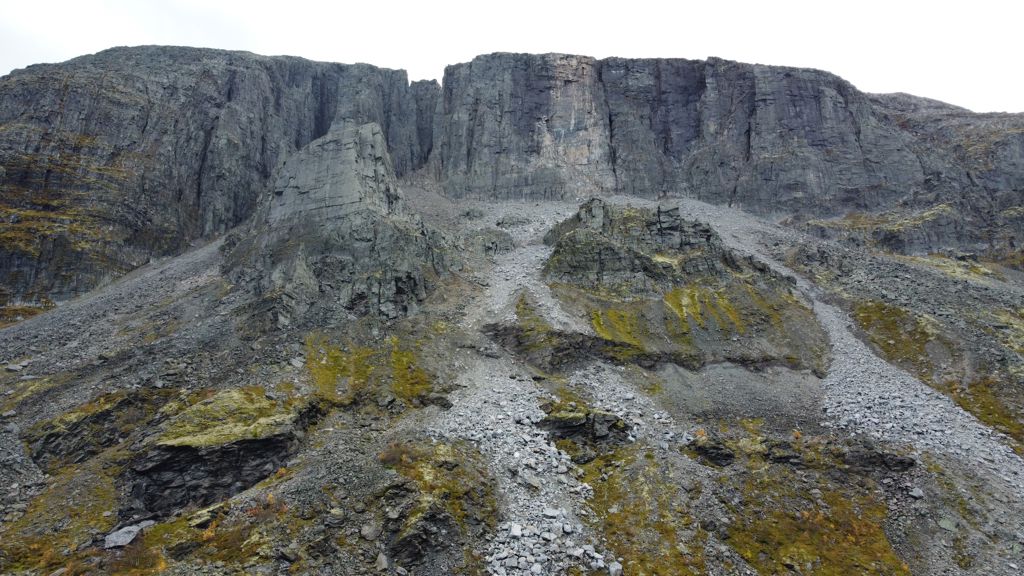Hazard zoning for small rock avalanches (volume < 100 000 cubic meters)
The main objective of this master thesis is to Investigate methods for evaluating small rock avalanches to improve our understanding of these phenomena. The thesis could help establish best practices for producing hazard zones for these mass movements.

Rock slides, or 'steinskred' in Norwegian, meaning the rock mass wasting processes larger than rock falls and smaller than rock avalanches (< 100 000 cubic meters), have received little international attention and are poorly understood.
We have scarce knowledge about release mechanisms and runout dynamics. Using default input parameters for rock falls is common for runout modelling, without further consideration.
Establishing new national guidelines for mapping rock slides (< 100 000 cubic meters) published by NVE in 2019 has triggered a need for improved understanding to produce hazard zones.
A collaboration between NVE, NGU and NGI to increase the understanding of rock slides started in 2020, and an international 2-day workshop was held in October 2020 with 44 international experts. The workshop concluded that rock slide phenomena are an 'in-between category' (between rock falls and avalanches) requiring more research.
Student tasks
Investigate methods for evaluating hazard levels for rock slide-prone areas, with release volumes roughly between 10 000 and 100 000 cubic meters. This should be done by testing available methodologies and models used internationally, or for larger rock avalanches adapted to volumes less than 100 000 cubic meters.
Central research questions could be:
- How can rock slide-prone areas be identified and release volume be estimated?
- How to investigate and evaluate the release area?
- How can the probability of failure be determined?
- How are rock slides different from rock falls and rock avalanches in terms of dynamics?
- What is controlling the runout?
- How can the runout be modelled? What is a typical runout for rock slides?
- What is the probability of remobilization of taluses, and how to include this in the runout analyses and hazard evaluation?
- What hazard does the dust cloud represent? Does this need to be considered?
- Remobilization of taluses can dramatically increase the volume of landslides and must therefore be considered.
- Runout models specialized/designed for rock slides do not exist, so models used for rock falls and rock avalanches should be investigated with other input parameters, to evaluate parameters that produce adequate results.
The thesis details will be designed in collaboration with the candidate and can reflect her/his background and interest. For example, the study can focus on fieldwork and mapping for hazard evaluation or runout mechanics and modelling.
